
What Is Humulene In Cannabis?
Cannabis is rich in terpenes, and humulene is one of the most common. Besides its unique, hoppy aroma, research is looking to observe if humulene may have therapeutic potential. Dive in as we explore all you need to know about humulene in weed.
Cannabis is a complex plant containing a rich assortment of over 400 active compounds, which all contribute to its unique traits and effects. Terpenes, in particular, play a notable role both in the effects cannabis has on the body as well as its unique aromas. In this article, we take an in-depth look at humulene, one of the most common terpenes in cannabis.
What is humulene?
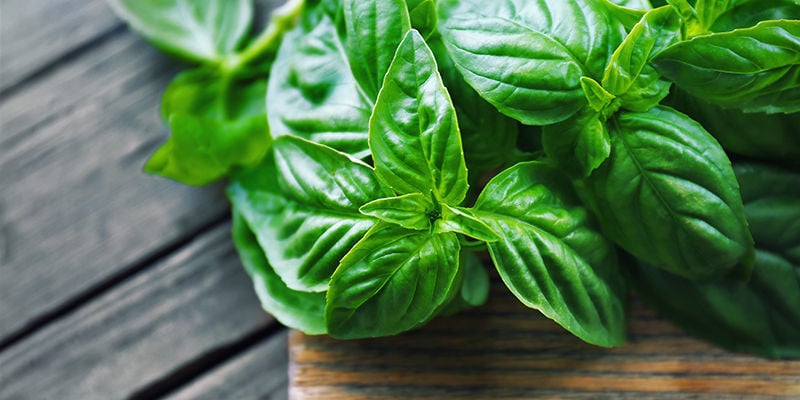
Humulene (also known as α-caryophyllene) is an aromatic hydrocarbon (or terpene) found in cannabis and many other natural sources. There are more than 30,000 known terpenes in the natural world, and they are often thought of as the main components of the "essential oils" of cannabis and other plants. Terpenes are very volatile, and humulene is no different; it melts at below 25°C and has a boiling point of 106°C. If you want to preserve the humulene in your cannabis, keep this in mind when storing, handling, and using it.
Where can you find humulene?
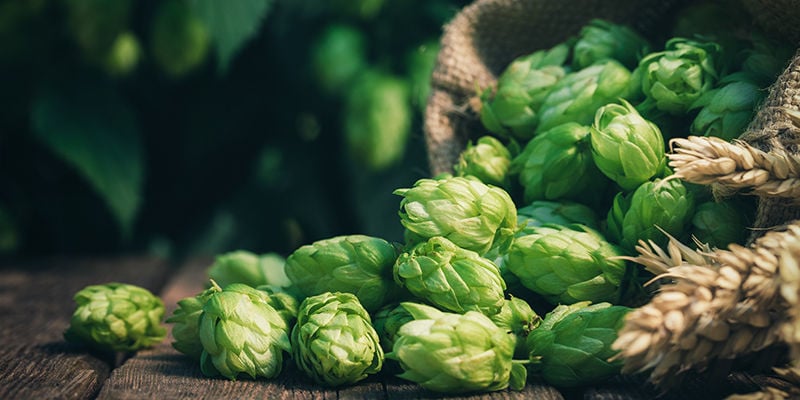
Humulene is one of eight primary compounds in cannabis, and is often found in strains with high concentrations of β-caryophyllene (another terpene with some similar characteristics). However, cannabis is far from the only source of humulene. It can also be found in high concentrations in:
Pine trees, orange orchards, sunflowers, and tobacco plants are also known to produce humulene.
What does humulene smell like?
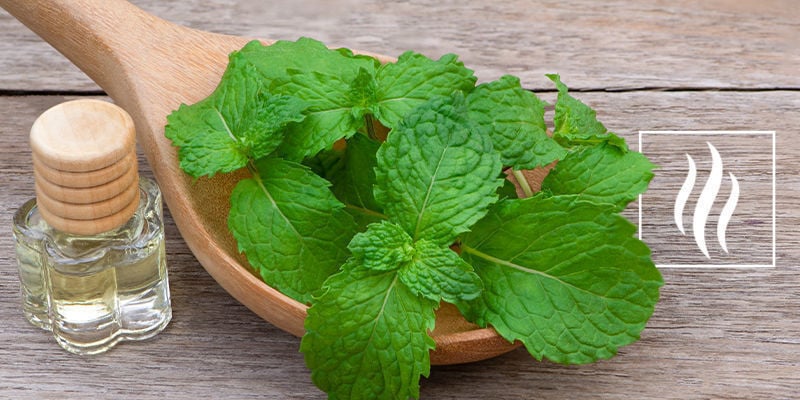
Humulene is often described as a "hoppy", "spicy", and "peppery" terpene. Think of that characteristic, semi-spicy kick you detect when you brush past a basil plant in the garden or crack open a cold craft IPA or other hoppy beer.
Besides this hoppy, spicy, and peppery kick, humulene also has subtle woody undertones like those you might detect when opening a cedar cigar box, as well as herbal notes reminiscent of fresh basil, thyme, sage, and other culinary herbs.
Potential benefits of humulene

Interest in the therapeutic potential of cannabis has grown exponentially in recent years. In turn, more scientific research has been dedicated to identifying and understanding the many compounds in the plant. Much of this research has shown that, besides cannabinoids like THC and CBD, the unique terpenes in cannabis likely play an important role in the plant's supposed clinical potential.
While there's still a lot we don't know about humulene and how it works, research so far suggests that it might impact:
-
Inflammation: Fernandes et al. (2007) tested humulene's effect on oral inflammation in mouse and rat models, concluding it to display similar outcomes to animals treated with dexamethasone, a steroidal anti-inflammatory drug. Rogerio et al. (2009) found similar results testing the efficacy of humulene on allergic reactions in the airways of animals.
-
Pain: Basting et al. (2019) studied the anti-inflammatory and nociceptive potential of two plant extracts rich in humulene on animals. Specifically, the study found that the two plant extracts (taken from Cordia verbenacea and Pterodon pubescens) synergised, appearing to provide more notable effects when taken together than on their own.
-
Bacteria: Jang et al. (2020) sought to determine the antibiotic effect of humulene on Bacteroides fragilis, a type of bacteria that can cause inflammatory bowel disease.
Research has also explored the effects of humulene on tumour cells, weight loss, and appetite. And while this research is very promising, we're still a long way from properly understanding humulene and its clinical potential.
Cannabis strains containing high concentrations of humulene
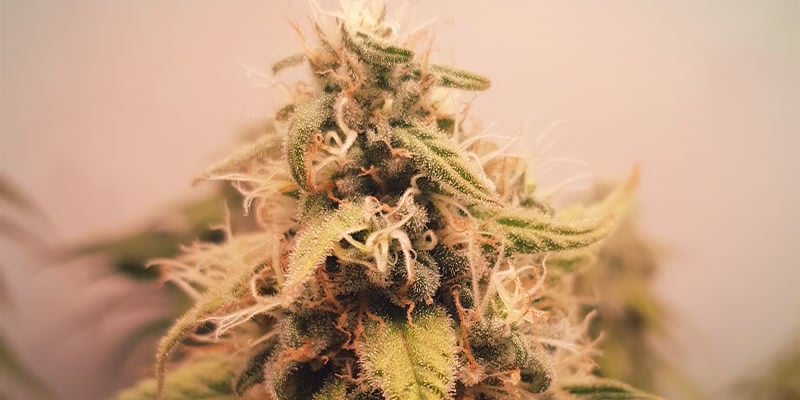
Humulene is among the most common terpenes found in cannabis, but it is particularly prevalent in the following strains.
1. Girl Scout Cookies
Girl Scout Cookies (GSC) is a super-popular modern cannabis variety bred on the coast of California. GSC is known for its incredibly nuanced aroma characterised by sweet, slightly fruity overtones and a subtle spicy kick, reminiscent of freshly baked shortbread.
2. Super Sour Diesel
Super Sour Diesel is to the East Coast of the USA what GSC is to the West. Diesel strains are renowned for their pungent, chemical-like aromas similar to that of diesel fuel, layered with strong hints of lemon, pepper, and hops (some Diesel strains may have a notable beer-like kick).
3. White Widow
White Widow is a Dutch powerhouse that's easily one of the most popular cannabis varieties on the planet. Renowned for her deeply relaxing physical effects, White Widow also has a telltale aroma that combines a classic Skunk scent with spicy, herbal undertones and subtle berry hints.
4. Pink Kush
Pink Kush, true to other Kush strains, is a robust variety with predominantly indica genetics. You'll hear users attest to her strong physical effects and iconic Kush aroma, which is dominated by strong, spicy hash-like notes, typical of strains native to the Hindu Kush region.
5. Original Glue
Original Glue (originally known as Gorilla Glue #4) is a resin-rich hybrid cross between Chem's Sister, Sour Dubb, and Chocolate Diesel. Its aroma is best described as citrusy, herbal, and peppery, and its effects are notorious for producing a heavy-handed physical stone.
Humulene: A Summary
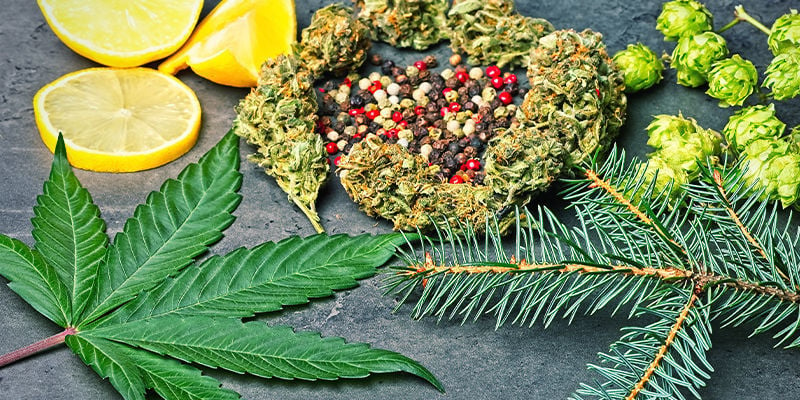
Humulene is one of the most common terpenes found in cannabis, though it is also present in a wide variety of plants and spices. It produces a very hoppy and slightly peppery aroma, and preliminary research is trying to determine if humulene demonstrates therapeutic potential in humans. If you're keen to light up and enjoy the unique aromas of this terpene, look into one of the strains listed above. Alternatively, check out the Humulene Integra Boost Terpene Pack.
- Basting, R. T., Spindola, H. M., Sousa, I. M. de O., Queiroz, N. de C. A., Trigo, J. R., de Carvalho, J. E., & Foglio, M. A. (2019/04/01). Pterodon pubescens and Cordia verbenacea association promotes a synergistic response in antinociceptive model and improves the anti-inflammatory results in animal models. Biomedicine & Pharmacotherapy, 112, 108693. - https://www.sciencedirect.com
- Fernandes, E. S., Passos, G. F., Medeiros, R., da Cunha, F. M., Ferreira, J., Campos, M. M., Pianowski, L. F., & Calixto, J. B. (2007/08/27). Anti-inflammatory effects of compounds alpha-humulene and (-)-trans-caryophyllene isolated from the essential oil of Cordia verbenacea. European Journal of Pharmacology, 569(3), 228–236. - https://www.sciencedirect.com
- Jang, H.-I., Rhee, K.-J., & Eom, Y.-B. (2020). Antibacterial and antibiofilm effects of α-humulene against Bacteroides fragilis. Canadian Journal of Microbiology, 66(6), 389–399. - https://cdnsciencepub.com
- Rogerio, A. P., Andrade, E. L., Leite, D. F. P., Figueiredo, C. P., & Calixto, J. B. . (2009). Preventive and therapeutic anti-inflammatory properties of the sesquiterpene alpha-humulene in experimental airways allergic inflammation. British Journal of Pharmacology, 158(4), 1074–1087. - https://bpspubs.onlinelibrary.wiley.com
-
 3 min
6 October 2022
What Is Geraniol In Cannabis?
Geraniol occurs throughout nature, and gives off aromatic, floral scents. Found in many strains of cannabis, does it only taste good, or could it have other beneficial properties? Here we...
3 min
6 October 2022
What Is Geraniol In Cannabis?
Geraniol occurs throughout nature, and gives off aromatic, floral scents. Found in many strains of cannabis, does it only taste good, or could it have other beneficial properties? Here we...
-
 5 min
22 January 2021
What Are Flavonoids, Terpenes, And Terpenoids?
Cannabis flowers appear simple to the naked eye. Yet, these sticky green nuggets house a secret, complex world. Not only do they contain over 100 cannabinoids, but they manufacture hundreds of...
5 min
22 January 2021
What Are Flavonoids, Terpenes, And Terpenoids?
Cannabis flowers appear simple to the naked eye. Yet, these sticky green nuggets house a secret, complex world. Not only do they contain over 100 cannabinoids, but they manufacture hundreds of...
-
 5 min
19 January 2021
Top 3 Cannabis Strains By Terpenes
Do you know your pinene from your linalool? How about your myrcene from your limonene? Sure, terpenes are responsible for the tastes and smells of weed, but they also directly influence the effects...
5 min
19 January 2021
Top 3 Cannabis Strains By Terpenes
Do you know your pinene from your linalool? How about your myrcene from your limonene? Sure, terpenes are responsible for the tastes and smells of weed, but they also directly influence the effects...
-
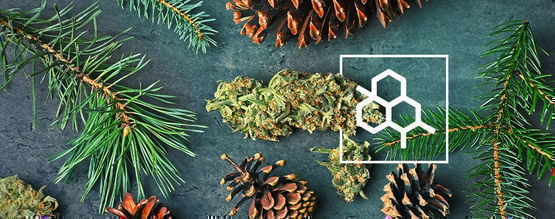 4 min
30 May 2018
Everything You Need To Know About Terpenes
If terpenes and terpenoids sound the same to you, that's because, for the most part, they are. But there is a small difference between these two compounds; terpenes are pure hydrocarbons....
4 min
30 May 2018
Everything You Need To Know About Terpenes
If terpenes and terpenoids sound the same to you, that's because, for the most part, they are. But there is a small difference between these two compounds; terpenes are pure hydrocarbons....













 United States
United States










